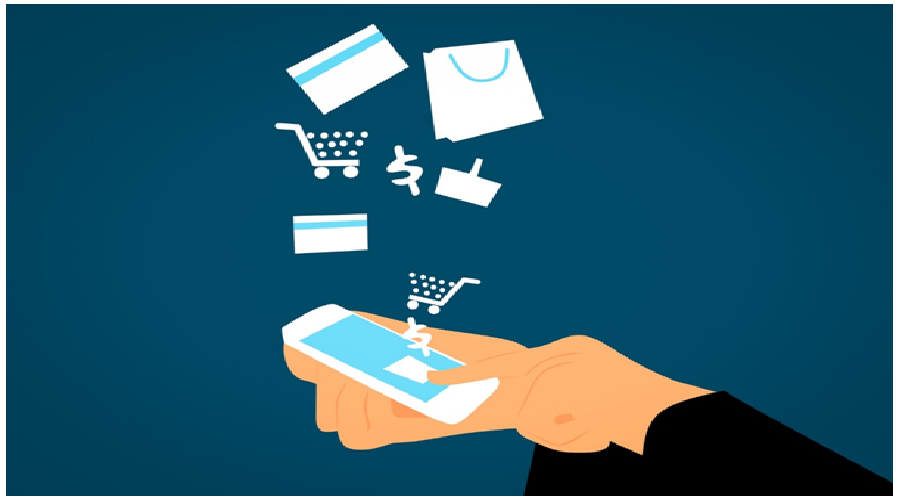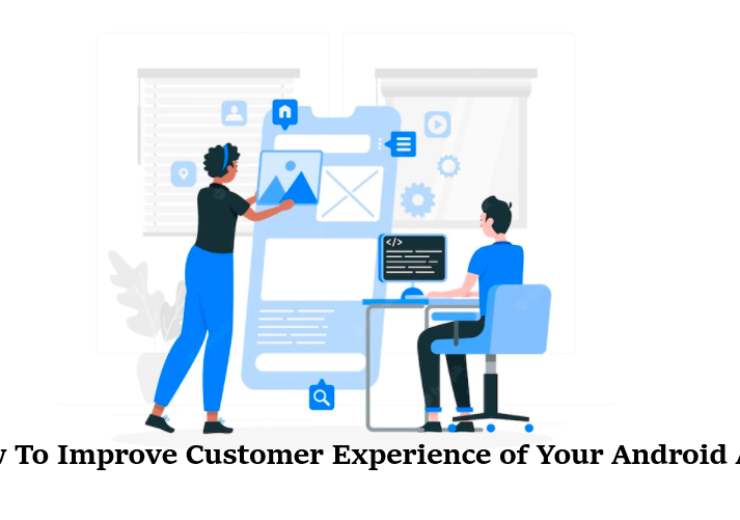Top 10 eCommerce App Features for Startups and Enterprises

The cutthroat competition in eCommerce apps today is undeniable. There is no scope for error in understanding target user requirements these days. A single feature can be the difference between an app’s success and failure in the market. Between countless features and needing to keep apps light, they need to select the ones that balance customer satisfaction and high performance.
Pre-ordering, online tracking, and curbside pickup are just a few benefits of online shopping that most of us avail on a regular basis, thanks to eCommerce apps. These come from carefully selected features integrated into the app after thoroughly researching the targeted audience, their needs, and demands.
If you are trying to build one for your business, you must know which ones are worth adding to receive the best response from users. An established eCommerce app development company can help you pick the most useful features according to your requirements. In the meantime, this list of 10 important features is a good place to start.
Must-Have eCommerce App Features for Startups and Enterprises
—————————————–
Building an eCommerce app for your business? Pay attention to the following essential features:
1. Simple Registration
A quick and convenient registration process keeps users on the app, whereas a detailed registration that asks for too much information will drive users away. Giving them the option to log in using their mobile number, Google, or social media accounts streamlines the process and makes it far more convenient.
Simplifying the registration process this way will increase sales volume because it offers a hassle-free entry point. The quicker you can get customers aboard and shopping, the greater the chances of raising the conversion rate; after all, happy customers make loyal customers.
2. Secure Payment Gateways
Cyber threats are growing with more online activity and the spread of personal information on the Internet. That is why you cannot compromise on security measures, especially for online stores. Integrating trusted payment gateways and prioritizing end-to-end encryption need to be on your list of security measures to take on your eCommerce app.
Platforms like Shopify set a gold standard in securing user data, ensuring transactions remain confidential, and building trust. Integrating secure payment gateways like Stripe or Braintree assures users of safe transactions. Amazon introduced its innovative one-click payment, streamlining the buying process and bolstering consumer confidence in online shopping. In short, whether it is a credit card, PayPal, or newer methods like cryptocurrency, transactions should be encrypted and secure if you want to build trust with your customers.
3. Product details
The truth is that a large number of customers still prefer paying a visit to the store over online shopping. One of the biggest reasons behind this is that they can know more about the product this way, as opposed to the lack of information online.
Pictures are simply not enough. Customers want to make informed choices, so the more details you can add to product descriptions, the greater their chances of getting sold quickly. Providing app users with more product details lowers the risk of returns because they know what they are purchasing and are less likely to make rash decisions. They will also be more satisfied with their orders because they know what they will receive.
4. Experiment Using Augmented Reality
AR offers users a ‘try before you buy’ experience. Whether it is seeing how a piece of furniture looks in a room or trying on clothes virtually, AR can bridge the gap between online shopping and the in-store experience, increasing conversion rates.
IKEA’s Place App is a popular example of this feature in action. It lets users virtually place furniture in their space before purchasing. Such AR-driven ‘try before you buy’ experiences elevate customer trust, bridging the tactile gap of online shopping.
5. Advanced search capabilities
eCommerce applications often have huge product catalogs consisting of thousands of items. As such, searching for a product should not seem like searching for a needle in a haystack for users.
In fact, product searches should take no more than a few seconds, regardless of the range of products featured in the online store. They can be made quicker by adding filters to narrow down the results. The filters must be relevant to the product category. Some filters will be applicable for most categories, such as price, sort by, bestsellers, payment mode, and average rating. Doing this helps users reach their desired products quickly without clicking on 20 buttons to search the entire store.
6. Multiple Shipping Methods
Your eCommerce app will cater to customers with different needs. They will prefer it over the rest if they can get their order shipped the way they want. Therefore, the more options you can add during enterprise app development, the more it helps build a positive user experience for users.
You can make the options more transparent by displaying how much each option will cost the user. These could be based on different factors, such as their location and how much time it will take. If you are building an MVP, you can start with multiple shipping methods and add subsequent details as the store becomes popular.
7. Item Gallery
Every product page requires extensive details in terms of item information and a product gallery with high-quality images (the more, the merrier). This does not mean you have to add several copies of the same image. Instead, try to convey useful information through the image gallery by adding pictures of the product from several angles.
You can provide other helpful details through images as well, such as the product being used in different environments and how it can benefit the customer should they buy it. Customers also appreciate 3D product visualizations that allow them to tap and drag the product and view it from different angles. A detailed product gallery can enhance the shopping experience by bringing customers a step closer to what they could experience by going to a physical store.
8. Effortless Checkout
eCommerce apps are incomplete without a shopping cart that allows them to check out quickly. It ensures a streamlined checkout process and lowers cart abandonment rates. On the other hand, a multistep checkout can deter potential buyers. Therefore, try to build a simplified process with options for guest checkouts.
Many applications offer features like one-click checkout to speed up transactions. The Apple Store is the best example of how powerful a streamlined purchasing process can be in retaining customers. Users can store shipping addresses and payment details to conduct swift and straightforward future checkouts.
9. Instant and Efficient Customer Support
Customers prefer shopping at stores where they can easily contact a representative in case of a query or issue. That is why a user-friendly customer service feature is essential to facilitate smooth interactions between store representatives and customers.
Chatbots are extremely useful in this case. Integrating chatbots during app development for startups, particularly AI-driven assistants, can help troubleshoot simple queries. This lets human representatives focus on issues that require human support.
10. Personalized Recommendations
Customers today expect personalized experiences when they go shopping – online stores are no different. eCommerce platforms can provide product suggestions based on browsing history, customizing the user experience with every visit.
Sephora, for instance, offers recommendations based on purchase history. You can also offer product suggestions based on past orders and browsing behavior once you integrate AI into your app.
In a Nutshell
These are 10 vital features every eCommerce app needs to have these days. Feature selection is a vital step that needs to be taken in accordance with the needs of your business and customers.
Explore as many features as possible with the help of an experienced eCommerce app development company to understand whether it is a must-have, a nice-to-have, or a redundant addition to your project. Also, make sure to equip your online store with the features mentioned above with a similar mindset to make it user-friendly and versatile.




